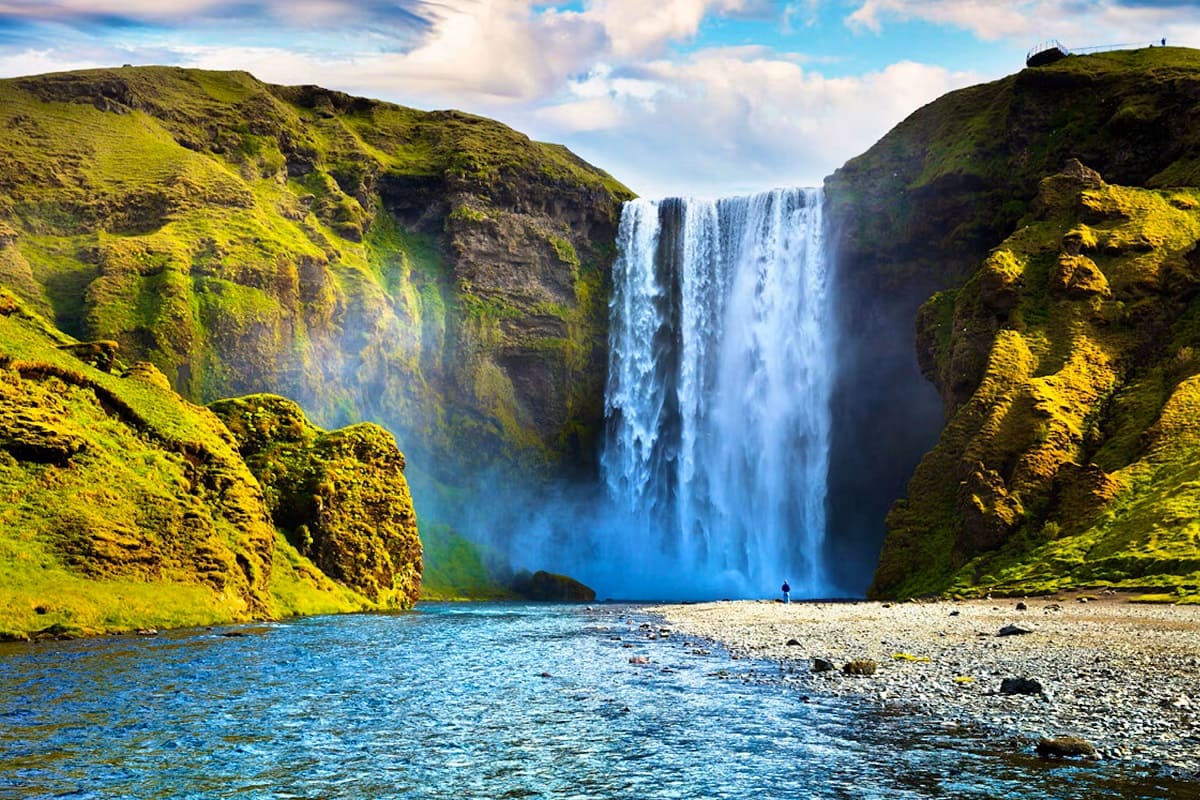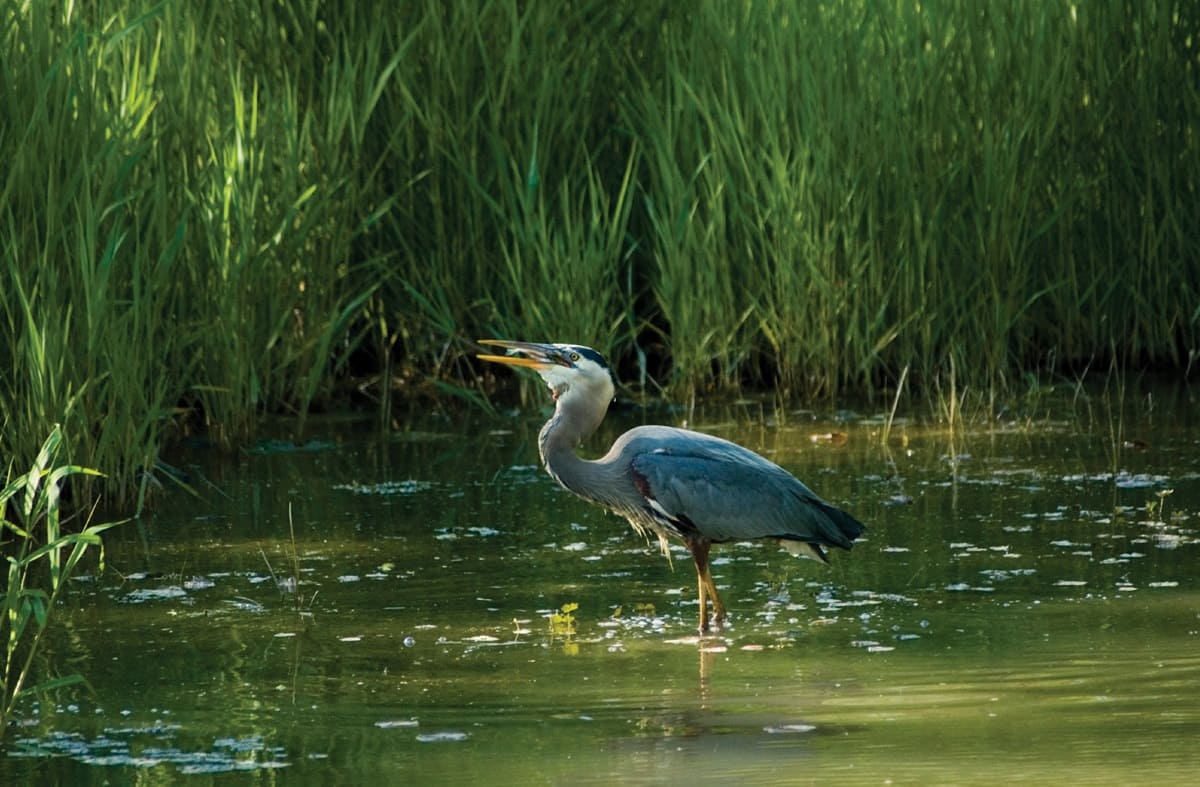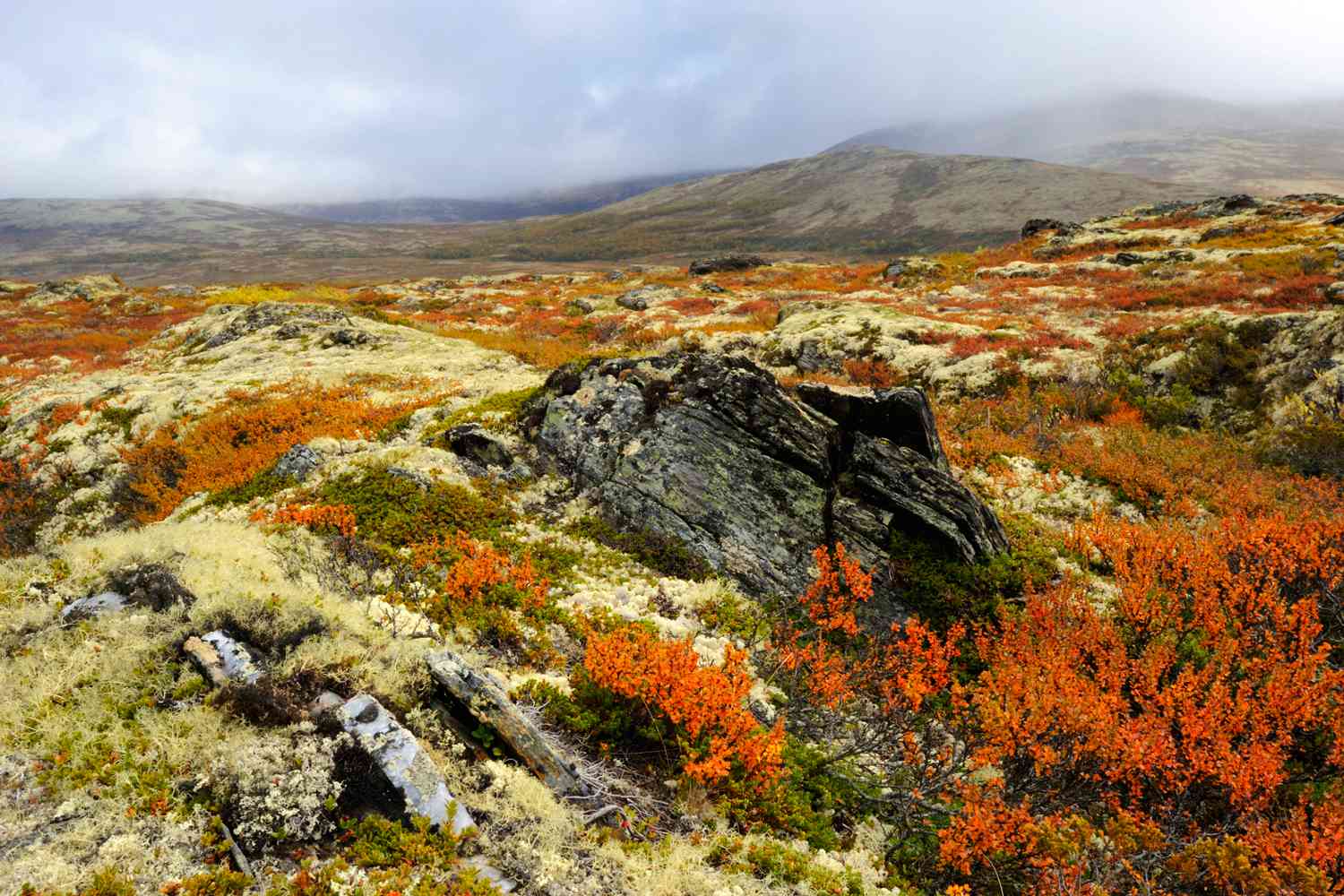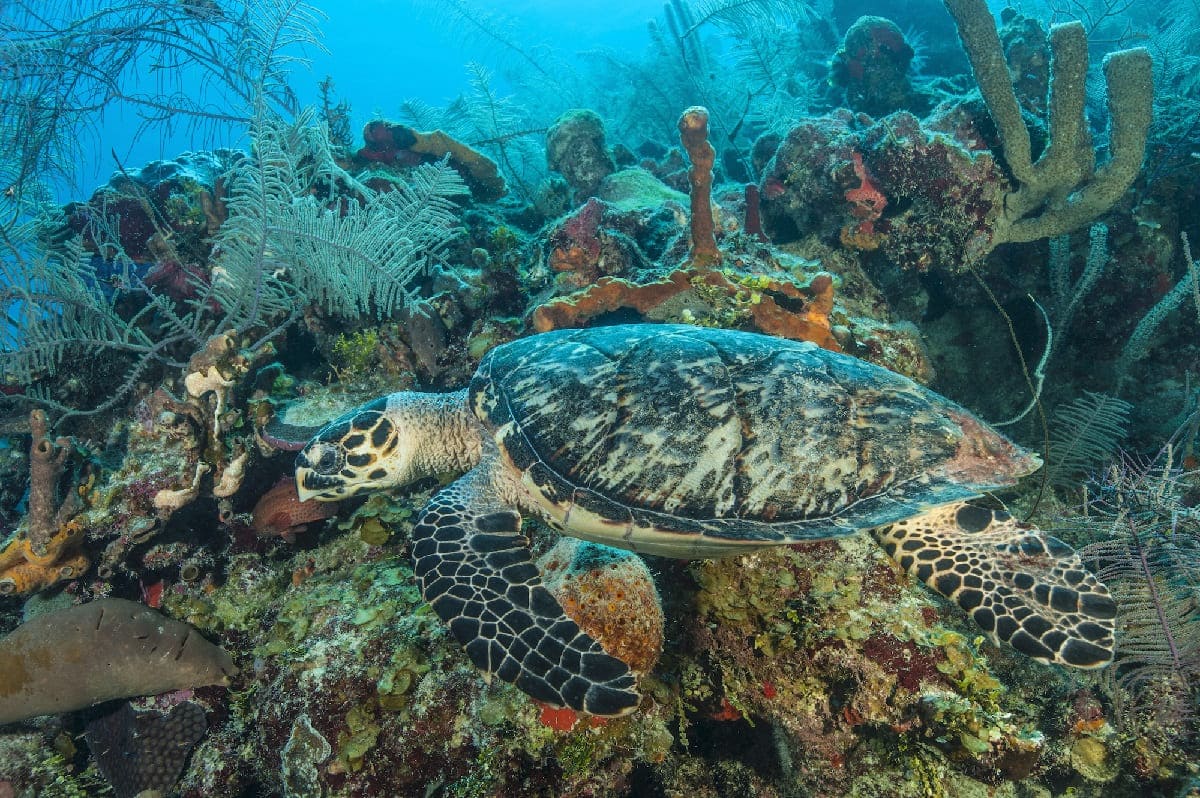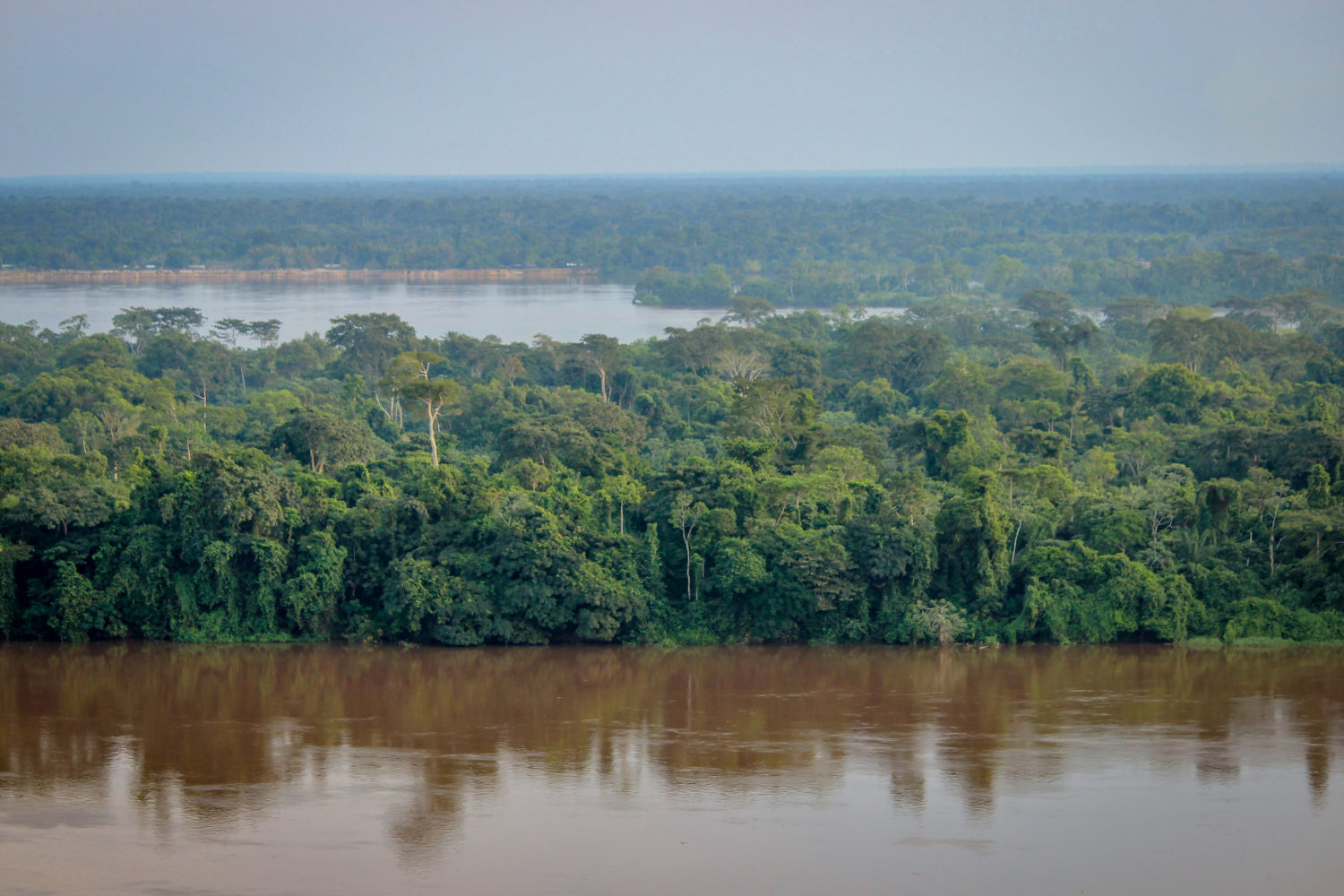Home>Science & Environment>Exploring The Beauty And Biodiversity Of Grasslands
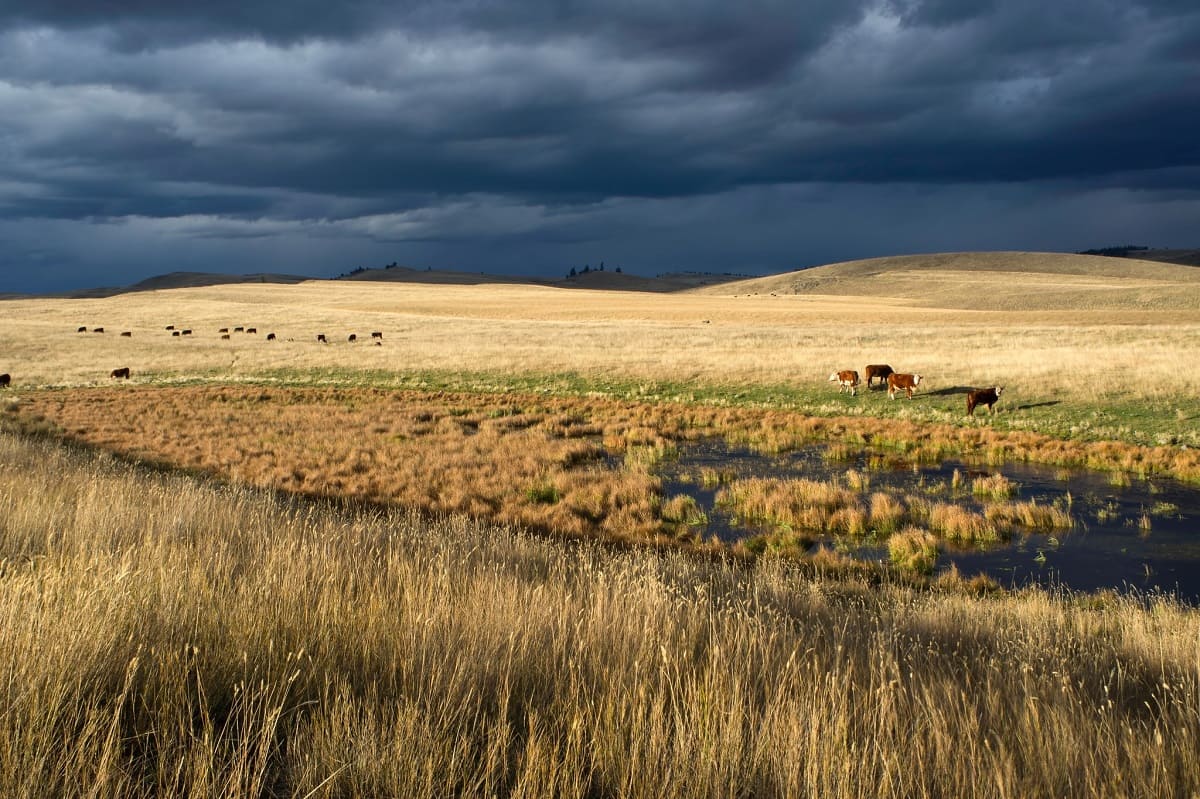

Science & Environment
Exploring The Beauty And Biodiversity Of Grasslands
Published: February 19, 2024
Explore the stunning beauty and rich biodiversity of grasslands with our in-depth coverage of science and environment topics. Learn about the importance of grasslands and their impact on the natural world.
(Many of the links in this article redirect to a specific reviewed product. Your purchase of these products through affiliate links helps to generate commission for Temperatures.com, at no extra cost. Learn more)
Table of Contents
The Importance of Grasslands in Ecosystems
Grasslands, often referred to as prairies, steppes, or savannas, are vital components of the Earth's ecosystems. These expansive landscapes, characterized by vast open spaces and diverse vegetation, play a crucial role in supporting a wide array of flora and fauna. The significance of grasslands extends beyond their aesthetic appeal, as they contribute to the overall health and balance of the planet's ecosystems.
1. Biodiversity Hotspots
Grasslands are home to a remarkable diversity of plant and animal species. The unique environmental conditions of these regions have given rise to specialized flora and fauna that have adapted to the grassland ecosystem. From the iconic bison and pronghorn in North America to the majestic lions and giraffes in the African savannas, these habitats support a rich tapestry of life. Additionally, grasslands provide essential habitats for numerous bird species, insects, and small mammals, contributing to the overall biodiversity of the planet.
2. Carbon Sequestration
The extensive root systems of grasses and other vegetation in grasslands play a crucial role in carbon sequestration. These deep-reaching roots help to store carbon in the soil, mitigating the impacts of greenhouse gas emissions and contributing to climate regulation. As such, grasslands serve as important carbon sinks, aiding in the global effort to combat climate change.
3. Water Filtration and Soil Stability
Grasslands also play a vital role in water filtration and soil stability. The dense root systems of grasses help to prevent soil erosion, particularly in regions prone to high winds and minimal rainfall. Moreover, these root networks enhance the soil's ability to retain water, which is essential for supporting both terrestrial and aquatic ecosystems. By filtering and purifying water as it percolates through the soil, grasslands contribute to the overall quality of freshwater resources.
4. Agricultural and Economic Significance
Beyond their ecological importance, grasslands have significant agricultural and economic value. These regions are utilized for grazing livestock and cultivating crops, providing essential resources for food production and livelihoods. Furthermore, grasslands offer opportunities for ecotourism, drawing visitors from around the world to experience the natural beauty and diverse wildlife that thrive in these unique environments.
In summary, the importance of grasslands in ecosystems cannot be overstated. These dynamic landscapes support a myriad of species, contribute to carbon sequestration, promote soil stability, and play a crucial role in global water cycles. Recognizing the value of grasslands is essential for fostering conservation efforts and ensuring the preservation of these vital ecosystems for future generations.
Unique Flora and Fauna of Grasslands
Grasslands are renowned for their remarkable diversity of flora and fauna, showcasing a rich tapestry of life that has adapted to the unique environmental conditions of these ecosystems. From the sweeping plains of the African savannas to the expansive prairies of North America, each grassland region harbors its own distinct assemblage of plant and animal species, contributing to the global biodiversity in extraordinary ways.
Flora of Grasslands
The flora of grasslands is characterized by a diverse array of grass species, including tall grasses such as bluestem and switchgrass, as well as shorter species like buffalo grass and blue grama. These grasses have evolved to thrive in the open, sun-drenched landscapes of grasslands, where they form the foundation of the ecosystem. Complementing the grass species are an assortment of wildflowers and herbs, adding vibrant splashes of color to the expansive greenery. From the iconic purple coneflower to the delicate prairie smoke, these flowering plants contribute to the visual allure of grasslands while providing essential nectar and forage for pollinators and herbivores.
Fauna of Grasslands
The fauna of grasslands is equally diverse, encompassing a wide range of species that have adapted to the open terrain and seasonal fluctuations in temperature and precipitation. Large herbivores such as bison, wildebeest, and pronghorn are emblematic of many grassland regions, utilizing their speed and agility to navigate the expansive landscapes in search of forage. Predators such as lions, cheetahs, and coyotes are also well adapted to the grassland environment, employing stealth and speed to pursue their prey across the open plains. Additionally, grasslands provide critical habitats for an array of bird species, including the iconic ostrich, secretary bird, and various raptors that soar above the grassy expanse in search of prey.
Unique Adaptations
One of the most fascinating aspects of the flora and fauna in grasslands is their remarkable adaptations to the environmental conditions. The deep root systems of grasses enable them to withstand drought and frequent grazing, while the migratory behaviors of certain herbivores allow them to capitalize on seasonal changes in vegetation. Furthermore, the symbiotic relationships between grassland species, such as the mutualistic interactions between grazing animals and grasses, contribute to the overall resilience and productivity of these ecosystems.
In essence, the unique flora and fauna of grasslands exemplify the intricate web of life that thrives in these dynamic environments. The interplay between plant and animal species, shaped by millennia of coevolution, underscores the resilience and adaptability of grassland ecosystems, making them a captivating subject of study and a testament to the awe-inspiring diversity of life on Earth.
Threats to Grassland Biodiversity
Grassland ecosystems, despite their resilience, face a myriad of threats that jeopardize the biodiversity and ecological balance they support. These threats stem from a combination of human activities, environmental changes, and natural processes, posing significant challenges to the preservation of grassland habitats and the myriad species that depend on them.
1. Habitat Loss and Fragmentation
One of the most pressing threats to grassland biodiversity is the ongoing loss and fragmentation of natural habitats. Expansion of agricultural activities, urban development, and infrastructure projects have led to the conversion of vast tracts of grasslands into croplands, pastures, and human settlements. This fragmentation disrupts the interconnectedness of ecosystems, isolating populations of plant and animal species and diminishing their ability to thrive and adapt to changing environmental conditions.
2. Overgrazing and Land Degradation
Overgrazing by livestock and the degradation of grasslands due to unsustainable land management practices pose significant threats to biodiversity. Intensive grazing can lead to the depletion of vegetation, soil erosion, and the loss of critical habitat for native species. Furthermore, the introduction of invasive plant species in overgrazed areas can further exacerbate the degradation, altering the composition of native plant communities and diminishing the resources available to indigenous fauna.
3. Climate Change Impacts
The escalating impacts of climate change, including shifts in precipitation patterns, increased frequency of extreme weather events, and rising temperatures, pose significant challenges to grassland ecosystems. These changes can disrupt the delicate balance of grassland flora and fauna, leading to shifts in species distributions, altered phenology, and heightened vulnerability to invasive species and diseases. Additionally, the intensification of droughts and wildfires in some regions further compounds the stress on grassland biodiversity.
4. Invasive Species and Pollution
The introduction and spread of invasive plant species and pollutants pose additional threats to grassland biodiversity. Invasive plants can outcompete native species, leading to the displacement of indigenous flora and the subsequent cascading effects on associated fauna. Moreover, pollution from agricultural runoff, industrial activities, and urbanization can degrade water quality, soil fertility, and air purity, impacting the health and viability of grassland ecosystems and the species they support.
5. Human-Wildlife Conflict
As human populations encroach upon grassland habitats, conflicts between humans and wildlife can escalate, leading to the persecution and depletion of native species. Predation on livestock, competition for resources, and habitat encroachment can result in retaliatory killings and the disruption of ecological balances, further imperiling the biodiversity of grassland ecosystems.
In summary, the threats to grassland biodiversity are multifaceted and complex, stemming from a combination of anthropogenic activities and environmental changes. Addressing these challenges requires concerted efforts to promote sustainable land management, mitigate climate change impacts, control invasive species, and foster coexistence between human communities and wildlife. By recognizing and addressing these threats, we can work towards safeguarding the invaluable biodiversity of grassland ecosystems for future generations.
Conservation Efforts for Grassland Preservation
Efforts to preserve and protect grassland ecosystems have gained momentum in response to the escalating threats facing these vital habitats. Conservation initiatives aimed at safeguarding grasslands and their biodiversity encompass a range of strategies and collaborative endeavors that seek to address the complex challenges posed by habitat loss, degradation, and climate change.
1. Habitat Restoration and Management
Conservation organizations and governmental agencies are actively engaged in habitat restoration and sustainable land management practices to mitigate the impacts of habitat loss and fragmentation. This includes the reclamation of degraded grasslands, the establishment of wildlife corridors to reconnect fragmented habitats, and the implementation of rotational grazing and controlled burning to maintain the ecological integrity of grassland ecosystems.
Read more: Exploring Colorado’s Winter Weather Patterns
2. Protected Area Designation
The designation of protected areas, such as national parks, wildlife reserves, and conservation easements, plays a pivotal role in conserving grassland biodiversity. These protected areas serve as sanctuaries for native flora and fauna, providing essential habitats for species that are vulnerable to habitat loss and human encroachment. Moreover, they offer opportunities for scientific research, environmental education, and ecotourism, fostering public appreciation for the value of grassland ecosystems.
3. Community Engagement and Stewardship
Engaging local communities and indigenous peoples in grassland conservation efforts is essential for fostering stewardship and sustainable resource management. Collaborative initiatives that integrate traditional ecological knowledge with modern conservation practices empower local stakeholders to actively participate in the protection of grassland habitats. This can involve community-based monitoring programs, capacity building for sustainable livelihoods, and the establishment of co-management arrangements that respect indigenous land rights and cultural values.
4. Climate Resilience and Adaptation
In light of the impacts of climate change on grassland ecosystems, conservation efforts are increasingly focused on enhancing the resilience of flora and fauna to changing environmental conditions. This includes the identification and protection of climate refugia, areas that are relatively buffered from climate stressors, as well as the promotion of habitat connectivity to facilitate species movement in response to shifting climatic patterns.
5. Policy Advocacy and International Collaboration
Advocacy for policy measures that support grassland conservation, including the enforcement of sustainable land use regulations, the integration of biodiversity considerations into agricultural and urban planning, and the implementation of international agreements for transboundary conservation, is integral to ensuring the long-term preservation of grassland ecosystems. Furthermore, fostering international collaboration and knowledge exchange among researchers, conservation practitioners, and policymakers is essential for addressing the transnational nature of grassland conservation challenges.
In essence, the conservation efforts for grassland preservation are multifaceted and require a holistic approach that integrates ecological, social, and policy dimensions. By leveraging a combination of habitat restoration, protected area designation, community engagement, climate resilience, and policy advocacy, stakeholders can work collectively to safeguard the invaluable biodiversity and ecological functions of grassland ecosystems for present and future generations.
Exploring Grassland Beauty Through Ecotourism
Ecotourism offers a unique opportunity to immerse oneself in the captivating beauty and biodiversity of grassland ecosystems while promoting conservation and sustainable development. From the sweeping plains of the Serengeti to the vast prairies of the Great Plains, grasslands beckon travelers with their awe-inspiring landscapes and diverse wildlife, providing a platform for experiential learning and environmental appreciation.
Immersive Wildlife Encounters
One of the most compelling aspects of grassland ecotourism is the chance to witness iconic wildlife in their natural habitats. Guided safaris and nature walks offer intimate encounters with species such as lions, elephants, zebras, and antelopes, allowing visitors to observe the intricate dynamics of predator-prey relationships and the coexistence of diverse fauna within the grassland ecosystem. These experiences not only foster a profound connection to nature but also contribute to local conservation efforts by generating economic incentives for wildlife protection.
Cultural Experiences and Indigenous Knowledge
In addition to the natural wonders, grassland ecotourism provides opportunities to engage with local communities and gain insights into indigenous cultures and traditions. Visitors can partake in cultural exchanges, learning about traditional practices, storytelling, and artisan crafts that are deeply rooted in the grassland landscapes. This cultural immersion fosters mutual respect and understanding while supporting the preservation of indigenous knowledge and heritage, enriching the ecotourism experience with a sense of cultural authenticity.
Sustainable Lodging and Eco-Friendly Practices
Many ecotourism initiatives in grassland regions prioritize sustainable lodging options and eco-friendly practices to minimize environmental impact and promote responsible tourism. Accommodations range from eco-lodges and tented camps to community-run guesthouses, offering visitors a chance to experience the tranquility of the grasslands while minimizing their carbon footprint. Furthermore, eco-friendly practices such as waste management, energy conservation, and local sourcing of goods and services contribute to the overall sustainability of grassland ecotourism ventures.
Environmental Education and Conservation Awareness
Grassland ecotourism serves as a platform for environmental education and conservation awareness, empowering visitors to become advocates for the protection of natural ecosystems. Interpretive guides and educational programs provide insights into the ecological significance of grasslands, the challenges they face, and the importance of conservation efforts. By fostering a deeper understanding of the interconnectedness of all life within the grassland environment, ecotourism cultivates a sense of stewardship and environmental responsibility among travelers.
Support for Local Communities and Conservation Initiatives
Beyond the experiential aspects, grassland ecotourism contributes to the socioeconomic development of local communities and the funding of conservation initiatives. Revenue generated from ecotourism activities often directly supports community-based projects, wildlife monitoring, anti-poaching efforts, and habitat restoration, creating tangible benefits for both people and wildlife. By aligning economic incentives with conservation goals, grassland ecotourism plays a pivotal role in promoting the sustainable coexistence of human communities and natural ecosystems.
In essence, exploring grassland beauty through ecotourism offers a transformative journey that intertwines immersive wildlife encounters, cultural experiences, sustainable practices, environmental education, and tangible support for conservation. By embracing the principles of responsible travel and fostering a deep appreciation for the splendor of grassland ecosystems, ecotourism becomes a powerful force for conservation, sustainable development, and the celebration of the intrinsic beauty of the natural world.

